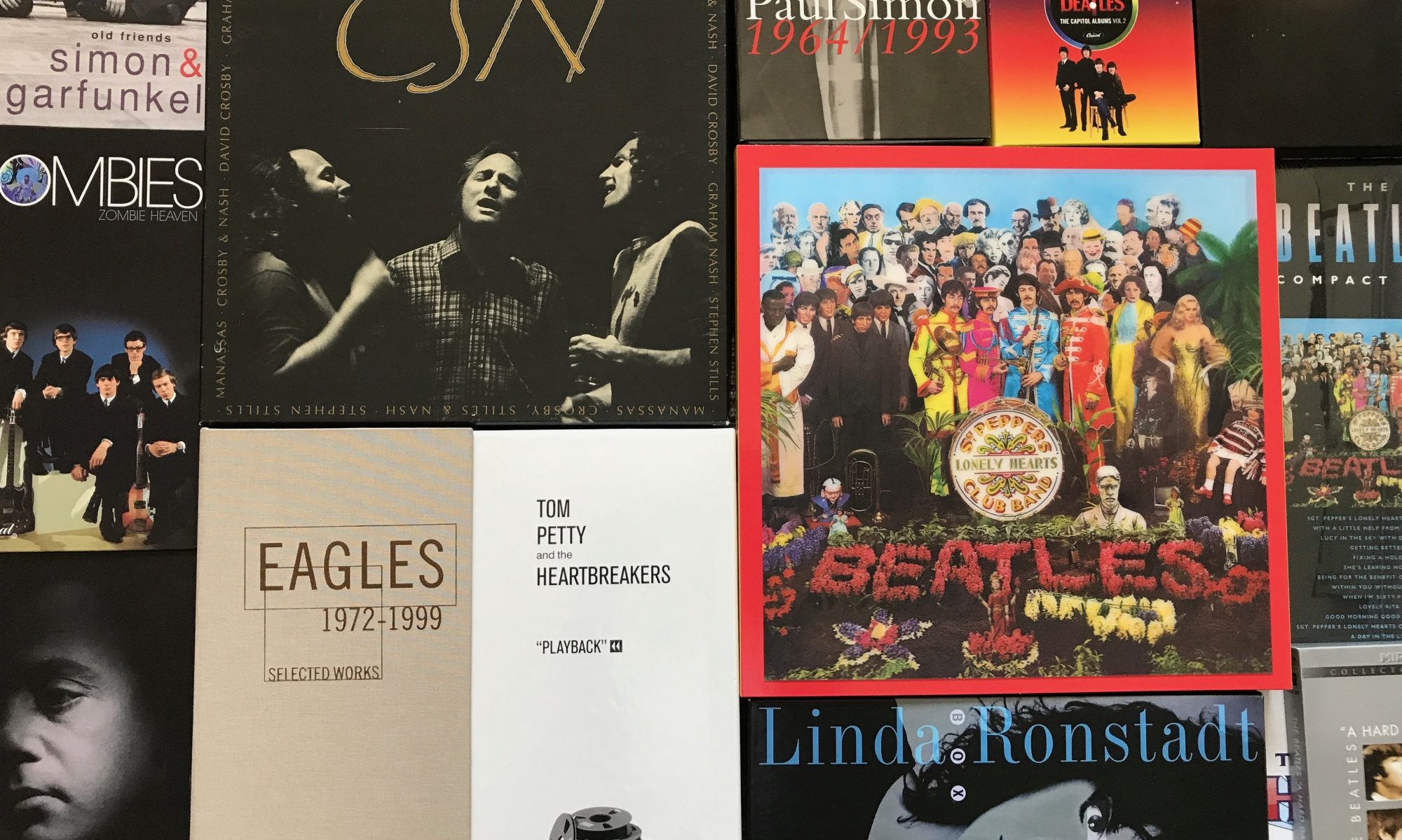The long awaited remix of Revolver arrived October 28th, 2022.
 The 5 CD Super Deluxe Box Set is $139. Disc 1 is the new stereo remix of the original album, discs 2 & 3 are alternate versions, disc 4 is the original mono mix, and disc 5 has the stereo remixes of “Paperback Writer” & “Rain”, along with the mono mixes. The track listings are below. There’s also a 100-page hardback book. Unlike previous box sets, there is no Blue-ray disc included.
The 5 CD Super Deluxe Box Set is $139. Disc 1 is the new stereo remix of the original album, discs 2 & 3 are alternate versions, disc 4 is the original mono mix, and disc 5 has the stereo remixes of “Paperback Writer” & “Rain”, along with the mono mixes. The track listings are below. There’s also a 100-page hardback book. Unlike previous box sets, there is no Blue-ray disc included.
 The Super Deluxe vinyl box set has all the same songs on four albums and a 7-inch EP for the “Paperback Writer” & “Rain” singles. The price is $199.98. The box shows Klaus Voormann’s cover art without the album title.
The Super Deluxe vinyl box set has all the same songs on four albums and a 7-inch EP for the “Paperback Writer” & “Rain” singles. The price is $199.98. The box shows Klaus Voormann’s cover art without the album title.
The track list for the original album.
The track listings for the alternate versions.

 (The same tracks are on the vinyl versions.)
(The same tracks are on the vinyl versions.)
Here are the remix versions available as shown on The Beatles’ North American website.

 Not pictured is a single CD version for $18.90, but the best deal is the 2-CD version for $25. It includes a CD of selected alternate versions, plus the remixes of “Paperback Writer” & “Rain”. There’s also a 40-page booklet. Here are the tracks for disc two of that set.
Not pictured is a single CD version for $18.90, but the best deal is the 2-CD version for $25. It includes a CD of selected alternate versions, plus the remixes of “Paperback Writer” & “Rain”. There’s also a 40-page booklet. Here are the tracks for disc two of that set.
Over the years, Revolver has become the Beatles album most often selected as their best. Unfortunately, the original mix was unable to do justice to the complex recordings, because only four recording tracks were available for multiple voices and instruments. The remixed separation of instruments and voices was accomplished using new technology developed by Peter Jackson’s team that worked on the Get Back film. The remix has breathed new life into all the great songs from this groundbreaking 1966 album. It’s amazing to hear Revolver in a wide-spectrum stereo for the first time. There’s a full review of the box set on this site. Here’s the link:
https://ontherecords.net/2022/10/beatlesrevolver-remix-box-set-review/
Extra news: Remix producer Giles Martin mentioned he’s also taken a look at Rubber Soul, and he says there are enough extra song takes for a box set. Unfortunately, it won’t happen quickly, because Apple released the Red and Blue albums remixed in November, 2023. Rubber Soul is likely moved to 2025 for the 60th anniversary of its release. The original photo for the cover would look good on the front of the box:
























































































